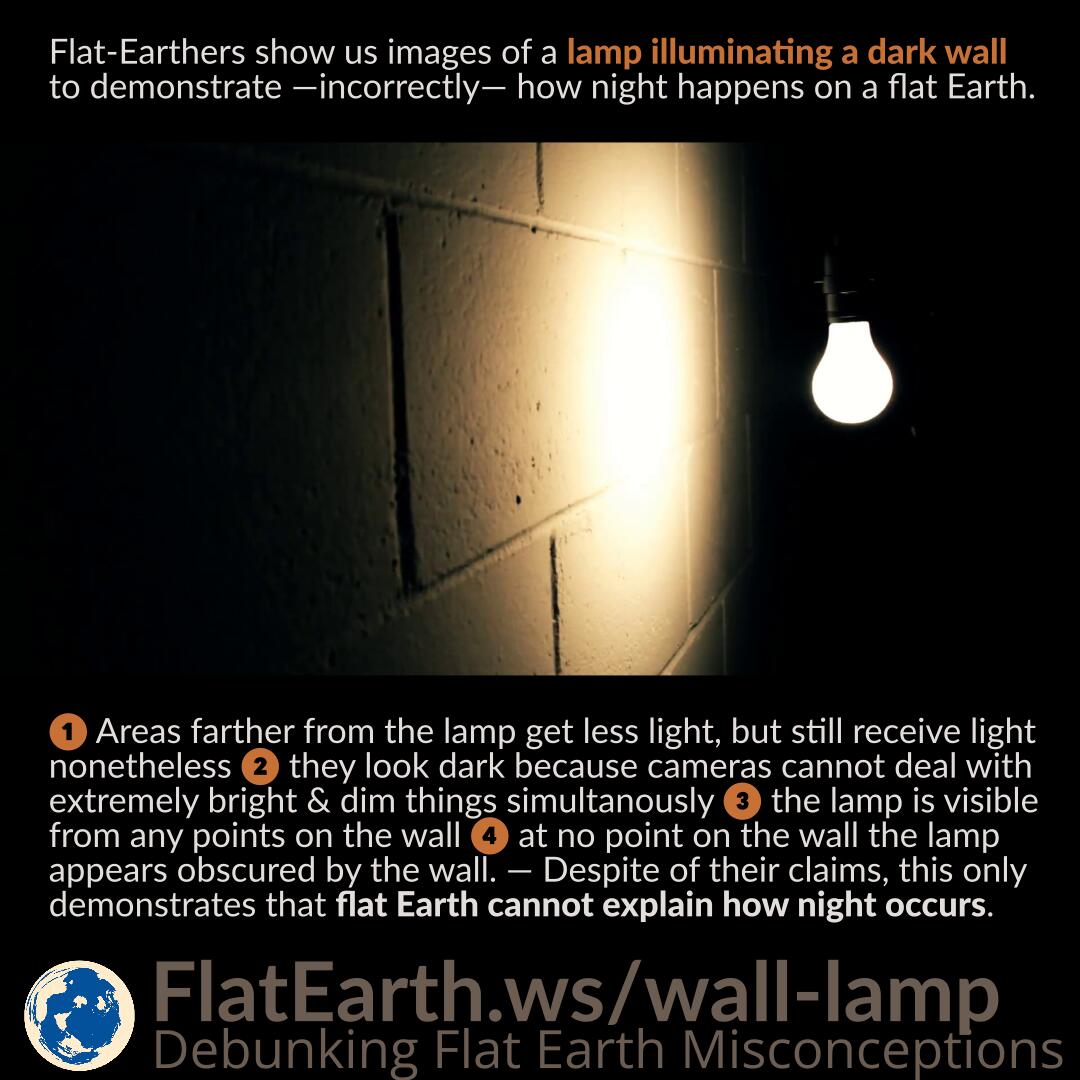Flat-Earthers often show us images of a lamp illuminating a dark wall to demonstrate —incorrectly— how night can happen on a flat Earth.
In the images, the areas farther from the lamp appear dark. Due to the inverse-square law, areas farther than the source of light receive less light. However, these areas still receive light nonetheless. From these dark areas, the lamp is still visible. This contrasts with what happens at night, that sunlight is nonexistent and the sun is not visible.
Despite receiving some light, the farther areas look dark in the images because cameras have dynamic-range limitations. They cannot capture extremely bright and dim things at the same time in the same exposure. Areas too bright for the camera will appear bright white, while the too dark areas will appear completely black. Furthermore, we humans like contrast in photographs, and sometimes contrast is increased for artistic purposes, and doing that will reduce the dynamic range of the images.
In the real-life, we can also observe the sun sets behind the horizon and rises from below the horizon. The fact is not observed in this demonstration. From any point on the wall, the lamp appears fully and never seen obscured by the wall.
References
- Contrast (vision) – Wikipedia
- Dynamic range – Wikipedia
- Inverse-square law – Wikipedia


